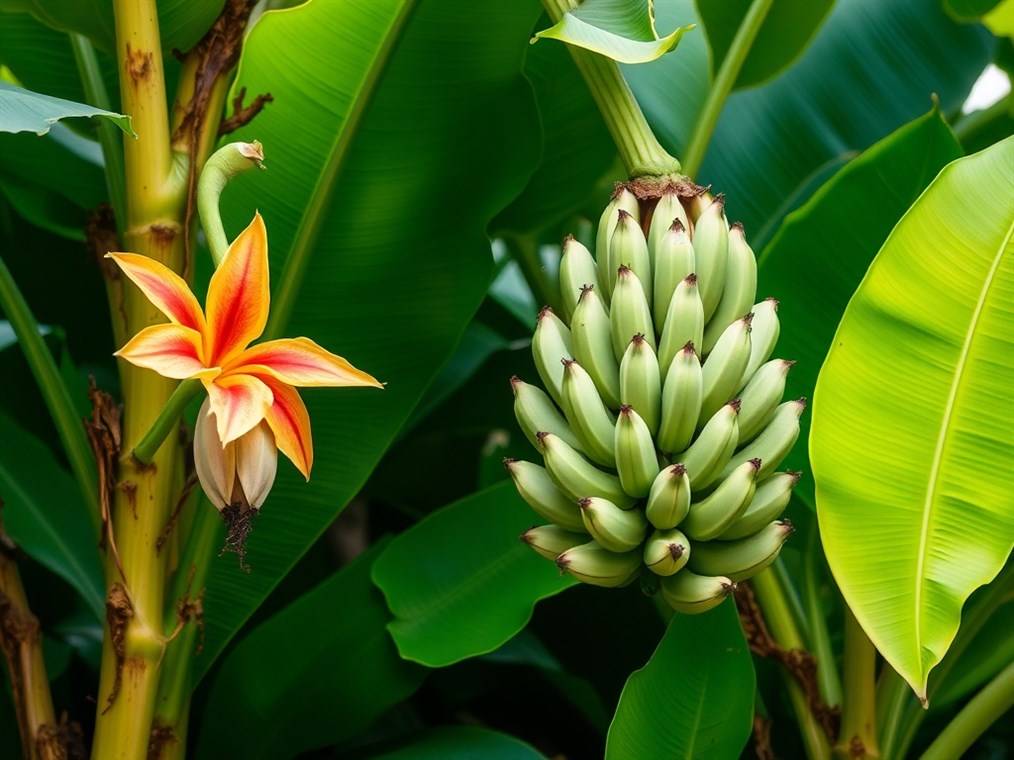From Flower to Fruit: Unveiling the Banana’s Timeline (The Human Touch)
Ever wondered how those bright yellow bananas make their way from a tropical flower to your fruit bowl? It’s quite a journey, and if you’re thinking of growing your own, knowing the timeline is super helpful. Forget rigid schedules; let’s talk about how a banana flower actually becomes a bunch of bananas.
The Banana Plant’s Life Cycle: A Quick Peek
Think of the banana plant’s life in three acts: growing up, showing off, and bearing fruit. First, the plant focuses on getting big and strong – roots digging in, leaves reaching for the sun. This can take a good year, maybe more, depending on the variety. Then comes the big moment: a huge, showy flower emerges, kind of like the plant’s way of announcing, “I’m ready!” This isn’t just any flower; it’s an inflorescence, packed with both male and female flowers. And guess what? The female flowers, those closest to the top, are the ones that turn into the bananas we love. Finally, the magic happens – those flowers start to swell and ripen into a beautiful bunch.
The Time Factor: From Bloom to Banana Split
So, how long does this whole process really take? Well, a banana flower typically pops up somewhere between 10 to 18 months after planting. Then, after the flower makes its grand appearance, you’re looking at roughly 2.5 to 6 months (80 to 180 days) before you can start thinking about banana bread. All in all, from planting that first little shoot to harvesting your own bananas, you’re generally looking at 9 to 15 months, give or take. Some of the more exotic cultivars can even take up to 18 months to fruit. It’s a waiting game, for sure!
What Makes Bananas Tick? (Factors That Matter)
Now, here’s the thing: that timeline isn’t set in stone. Several things can speed it up or slow it down.
- Climate is King (or Queen): Bananas are sun-loving creatures. They crave warmth and humidity. Think tropical vacation weather! If it’s too cold or shady, they’ll take their sweet time. An average temperature of 26-27°C (79-81°F) is where they are happiest.
- Variety is the Spice (and the Banana): Just like apples, there are tons of banana varieties, and some mature faster than others. Those cute little dwarf bananas? They tend to be quicker off the mark than their larger cousins.
- Sunshine, Sunshine, Sunshine!: Bananas need their daily dose of Vitamin D, just like us. While they can handle a little shade, they really thrive in bright sunlight – at least six hours a day.
- Water, Water Everywhere (But Not Too Much): Consistent moisture is key. Think regular, gentle watering, not a monsoon. A thirsty banana plant won’t produce much fruit, and what it does produce will be small and sad-looking.
- Good Soil is Gold: Bananas are hungry plants. They need soil that’s rich, well-drained, and full of good stuff.
- Feed Me, Seymour! (Fertilizer Matters): To produce all that fruit, the plant needs a lot of nutrients. Compost, mulch, and other organic matter are your friends here.
Ready to Harvest? Here’s How to Tell
Don’t just mark your calendar and hope for the best. Bananas will tell you when they’re ready if you know what to look for:
- From Angular to Awesome: Mature bananas lose those sharp edges and become nice and rounded.
- Plump It Up!: The individual bananas, or “fingers,” should look plump and well-filled.
- Color Me Ripe (Almost): The skin will start to lighten from a deep green to a lighter green, sometimes with a hint of yellow.
- Flower Power…No More: The little dried-up flower remnants at the tips of the bananas should be easy to rub off.
Keep in mind that commercial growers often harvest bananas while they’re still green for shipping purposes. But if you’re growing your own, let them get nice and plump and show a little color for the best flavor.
The Sweet Reward
Growing bananas takes patience, no doubt about it. But understanding the process, giving your plants what they need, and watching those flowers turn into fruit is incredibly rewarding. And the taste of a homegrown banana? Forget about it! It’s a little slice of tropical paradise right in your backyard.

